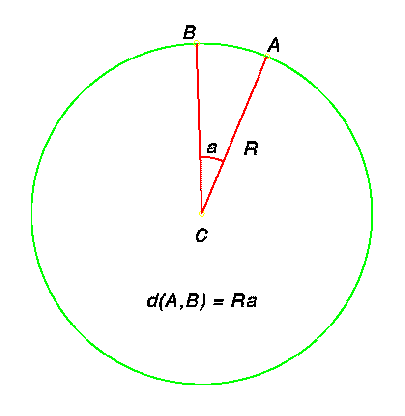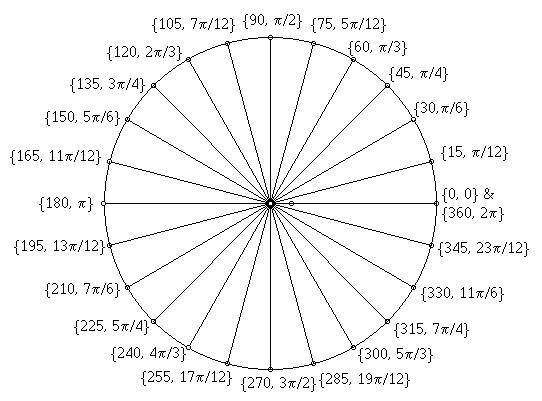 radians in a circle.
Thus 2
radians in a circle.
Thus 2 radians equals 360 degrees. This means that
1 radian = 180/
radians equals 360 degrees. This means that
1 radian = 180/ degrees, and 1 degree =
degrees, and 1 degree =  /180 radians.
/180 radians.
The size of a radian is determined by the
requirement that there are 2 radians in a circle.
Thus 2
radians in a circle.
Thus 2 radians equals 360 degrees. This means that
1 radian = 180/
radians equals 360 degrees. This means that
1 radian = 180/ degrees, and 1 degree =
degrees, and 1 degree =  /180 radians.
/180 radians.
The reason for this is that so many formulas
become much easier to write and to understand
when radians are used to measure angles.
 A very good example is provided
by the formula for the length of a circular arc. If A and B
are two points on a circle of radius R and center C, then the length of the arc of
the circle connecting them is given by
A very good example is provided
by the formula for the length of a circular arc. If A and B
are two points on a circle of radius R and center C, then the length of the arc of
the circle connecting them is given by
where R is the radius of the sphere, and a is the angle ACB measured in radians. If we measure the angle in degrees, then the formula is
 /180,
/180,
These formulas can be checked by noticing that the arc length is
proportional to the angle, and then checking the formula for the full
circle, i.e., when a = 2 radians (or 360 degrees).
radians (or 360 degrees).
The figure below gives the relationship between degrees and radians for the most common angles in the unit circle measured in the counterclockwise direction from the point to the right of the vertex. The form of the ordered pair is {degree measure, radian measure}

Created on The Geometer's Sketchpad by Boyd E. Hemphill
 |
Return to Basic information about spheres. |
 |
Return to Girard's Theorem. |
 |
Table of Contents. |